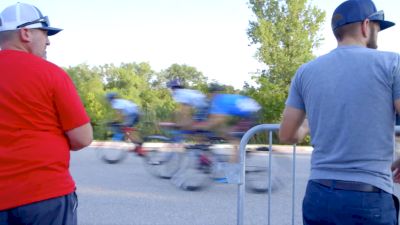What To Know Before Racing Bikes During The Pandemic
What To Know Before Racing Bikes During The Pandemic
FloBikes spoke with medical experts and race promoters to learn about the risks involved with racing during the pandemic. This list is what we learned.
Unlock this article, live events, and more with a subscription!
Already a subscriber? Log In
As restrictions on social gatherings begin to ease amid the COVID-19 pandemic, local cycling events are among the businesses reopening. Given the possibility of returning to group rides and competitions, a critical question remains: Is it safe?
To better understand the risks associated with racing bikes during the pandemic, FloBikes spoke with Dr. J. Trees Ritter an avid cyclist and infectious diseases specialist, Dr. Michael Roshon the Chief Medical Officer at USA Cycling and Chuck Hodge, USA Cycling’s Chief of Racing and Events, as well as race promoter Andrew Willis of the popular Driveway Series race in Austin, Texas.
This is what FloBikes has learned about racing during the pandemic from conversations with the experts.
- USA Cycling has lifted its suspension on issuing permits to events. However it is up to local events to work with their local governments and health agencies to determine if the events can safely be held.
- The current knowledge of how the coronavirus is spread suggests that transmission is significantly less likely outdoors. The disease is primarily spread by respiratory droplets from an infected person making contact with another person’s mucus membranes (eyes, nose and mouth).
- The likelihood of infecting another person in a moving peloton is not zero. The risk may be relatively low, but the risk is certainly present.
- Bike racing is inherently dangerous. It is USA Cycling’s position that in addition to the already well known risks of bike racing, the risk of spreading the coronavirus must now be factored into each individual’s decision to participate in cycling events.
- Face to face interactions with others carries the greatest risk of transmission. For that reason, socializing before and after races and standing in close contact with others on the start lines of races may be the moments that pose the greatest risk of transmission.
- Masks should be worn when in close contact with others.
- Anybody participating in a cycling event must be at “incredibly low risk” of having coronavirus. Anybody who has symptoms, has been in contact with someone showing symptoms or has recently traveled to an area with high community spread of coronavirus must stay home.
- The larger the event, the higher the risk of transmission. For example, a mass start event of 1,000 people carries much greater risk than a 10-person group ride.
